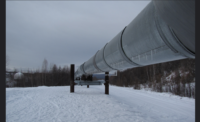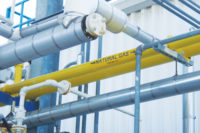A key trend in oil and gas industry safety is employee reporting of occupational health and safety issues.
In many workplaces, employees are expected to complete safety checks and security reports regularly, and many feel empowered to do so. This results from corporate cultures that values safety in the workplace. Leaders and executives are demonstrating that safety is their superseding priority, and as a result, employees are working safely whether anyone is watching or not, employees are feeling motivated to take action if they notice something unsafe, and they are also feeling encouraged to report potential threats or accidents. When safety is the highest value within a company, a workplace culture ensues that equates to safer working environments.
To combat on-site employee risks, the topic of age must be addressed. With Canada’s aging population comes a laundry list of employer challenges, from effectively managing chronic health conditions to expanding health and injury prevention programs. In fact, one-third of Canadians have at least one chronic health condition. Correspondingly, many employers are now implementing health prevention programs to help their aging employees stay healthy and maintain productivity at work.
And what about other challenges, such as employee exhaustion when operating heavy machinery or working in high voltage areas?
Perhaps gloves will be developed that can measure your pulse, and alert someone who is falling asleep, or a hard hat will be designed with sensors that activate if you are walking too close to a high voltage area. What about safety glasses that detect gas in the air or a pair of steel toed boots that warn if your body temperature is getting too hot or too cold? These ideas may sound farfetched, but with advances in automated equipment, it may not be that far off.
Factors such as human error, stress and fatigue undoubtedly have the ability to cause unsafe working conditions. A shift to more mechanical systems has the potential to greatly reduce workplace injuries. What is most important, however, is that companies value safety and become safety leaders.
When an organization establishes and maintains a positive safety culture, its sets performance standards. A safety culture within the workplace will empower workers, and whether they are maneuvering a joystick or assembling a pipe manually, they will be aware of safety hazards and want to take action to prevent lost-time accident and serious injuries.
Source: http://theogm.com


